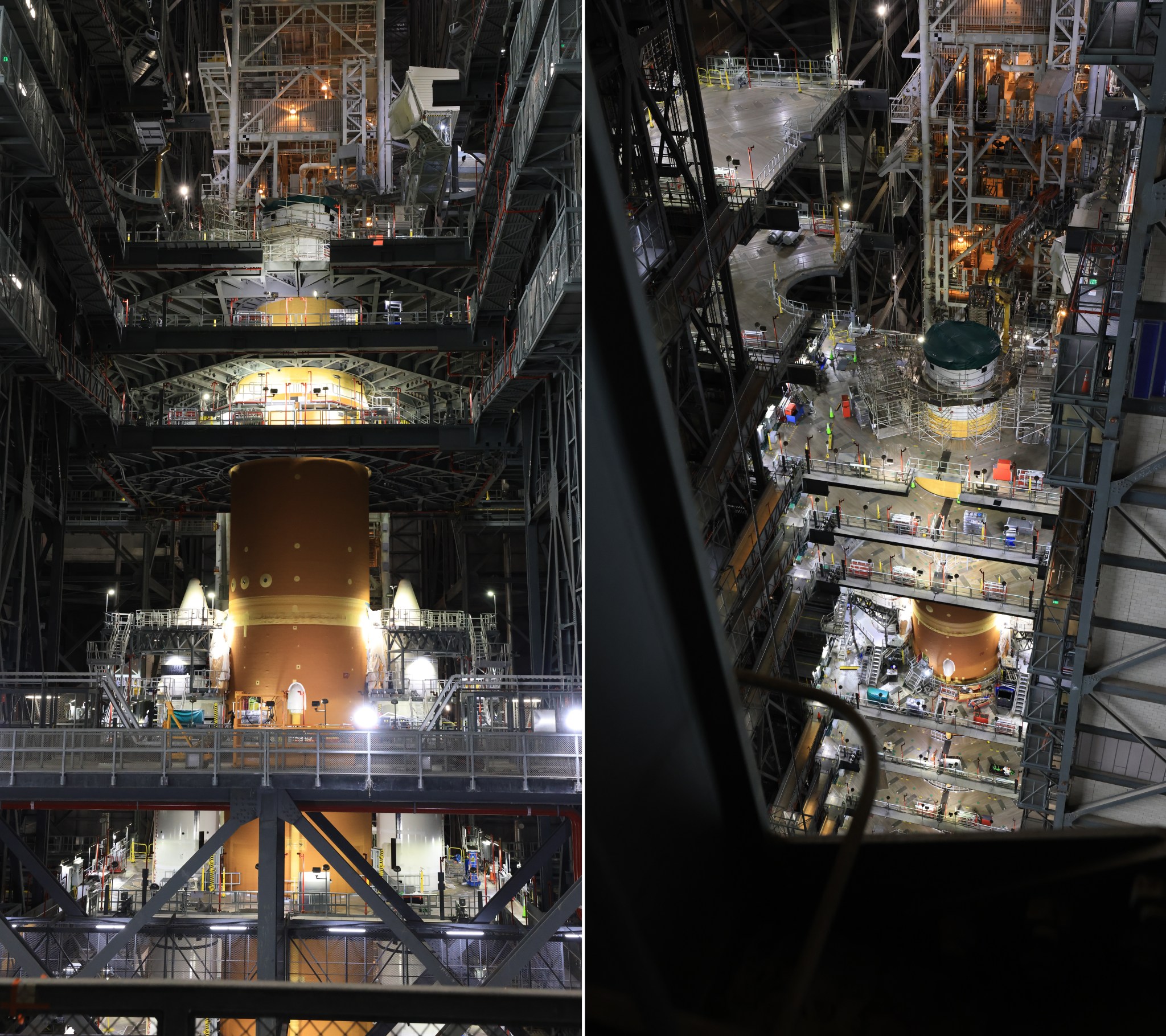NASA Draws Closer to Artemis II Rocket Completion with Newest Addition
NASA integrated the Artemis II Orion stage adapter with the rest of the SLS (Space Launch System) rocket on Wednesday in the Vehicle Assembly Building at the agency’s Kennedy Space Center in Florida.
Built by NASA engineers at the agency’s Marshall Space Flight Center in Huntsville, Alabama, the adapter connects the rocket’s interim cryogenic propulsion stage to the Orion spacecraft. A composite diaphragm within the ring protects the Orion spacecraft from hazardous gases generated during launch.
Four CubeSats containing science and technology experiments will be deployed from the adapter into high Earth orbit after Orion is a safe distance away . The 12U CubeSats aboard Artemis II were developed by international partners South Korea, Germany, Argentina, and Saudi Arabia. One “U”, or unit, is defined as 10 centimeters by 10 centimeters by 10 centimeters.
As the Artemis II rocket is nearing completion at NASA Kennedy, work continues on flight hardware for Artemis III. NASA Marshall engineers have flipped the Artemis III Orion stage adapter to begin bracket, avionics, and cable instillation. Later this fall, its diaphragm will be installed.
Through Artemis, NASA will send astronauts to explore the Moon for scientific discovery, economic benefits, and build the foundation for the first crewed missions to Mars.



























